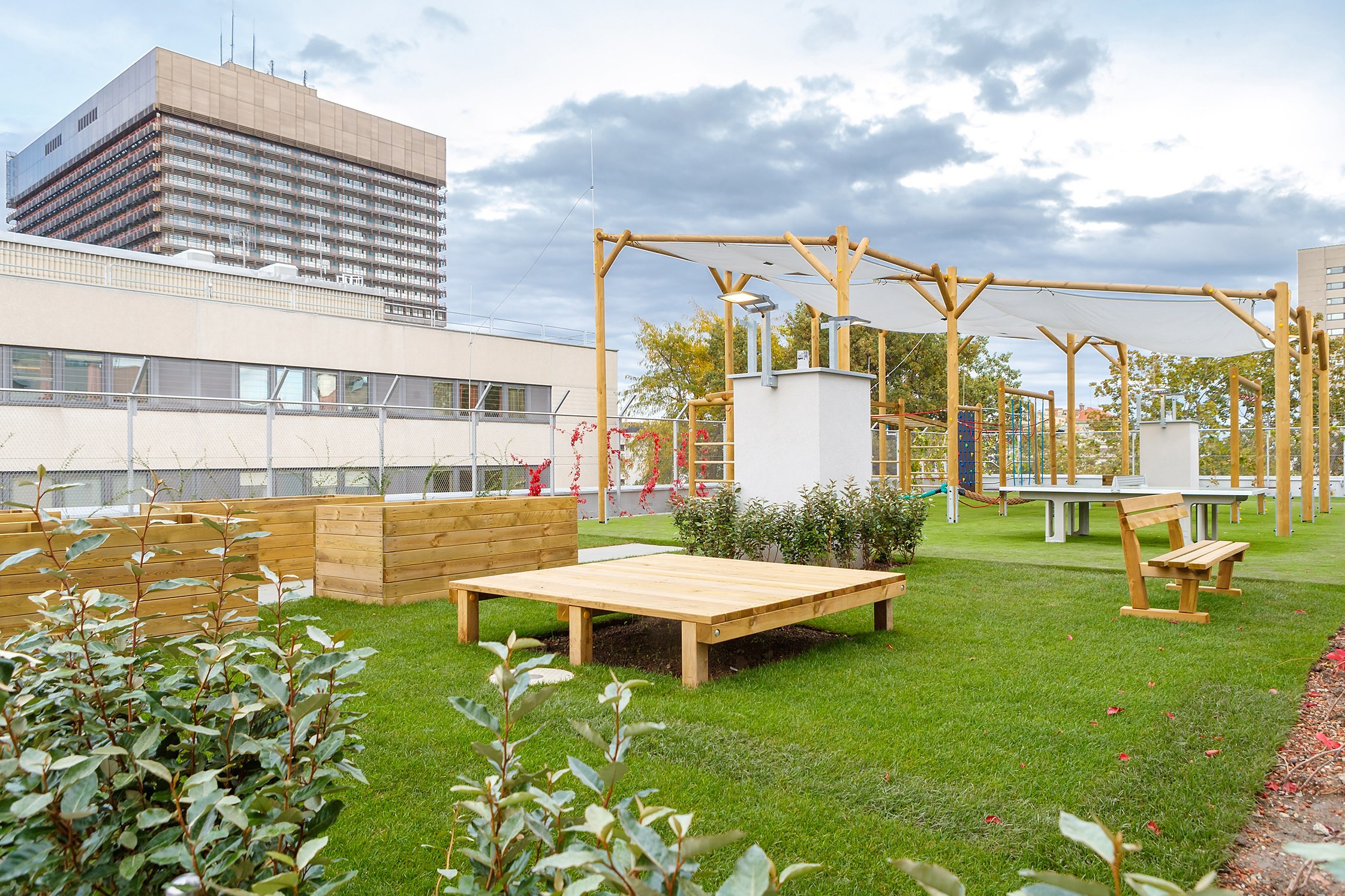
(Vienna, 18-12-2023) Coercive measures are used in psychiatric treatment to avert acute danger to a person's life and health. However, such measures can be associated with considerable risks for patients and treatment teams. It is known from studies in adult psychiatric inpatient wards that environmental factors such as staffing, availability of retreat options, privacy and access to natural light can influence the use of coercive measures. A study at the Department of Child and Adolescent Psychiatry at MedUni Vienna and University Hospital Vienna now proves for the first time that architectural innovation can reduce the use of coercive measures for adolescents with mental illness. The research results were recently published in "Child and Adolescent Mental Health".
The study was conducted accompanying the move of the Department of Child and Adolescent Psychiatry at MedUni Vienna and University Hospital Vienna to a new facility. In October 2020, the Department moved into a specially adapted and renovated building on the grounds of the University Hospital Vienna. Thanks to the increased space available and better suited treatment facilities, patients now have more privacy and retreat options, as well as more natural light and generally more modern and child- and adolescent-friendly facilities.
Overall, this architectural intervention proved to be effective in the study: "Our study confirms the importance of age- and needs-appropriate room conditions as an important factor in the prevention of coercive measures in children and adolescents with mental illness," says the first author Klara Czernin, Deputy Head of the Outpatient Clinic at the University Department of Child and Adolescent Psychiatry, summarising the results. Within 18 months of the clinic's relocation, the rate of mechanical restraints was reduced from 13.7 to 8.1 per cent among underage patients compared to the same period in the previous year, and the cumulative total duration of all coercive measures was also reduced by almost half.
"If you consider the increase in psychological stress in children and adolescents as the COVID-19 pandemic with its restrictions continued during the observation period of our study, the enormous relevance of our results becomes clear," emphasises Paul Plener, Head of the University Department of Child and Adolescent Psychiatry. The findings also fill a gap in the still inadequate state of data on the prevention of coercive measures in child and adolescent psychiatry. Among other things, it is also important to address the needs of individual vulnerable patient groups, to develop further training programmes for staff and to consider the topic of prevention in acute psychiatric treatment concepts, says Klara Czernin, citing further key points in the care of children and adolescents with mental illnesses.
Publication: Child and Adolescent Mental Health
Space for youth mental health - coercive measure use before and after architectural innovation at a department of child and adolescent psychiatry
Klara Czernin, Anselm Bründlmayer, Josef S. Baumgartner, Paul L. Plener
DOI: 10.1111/camh.12690
https://acamh.onlinelibrary.wiley.com/doi/10.1111/camh.12690